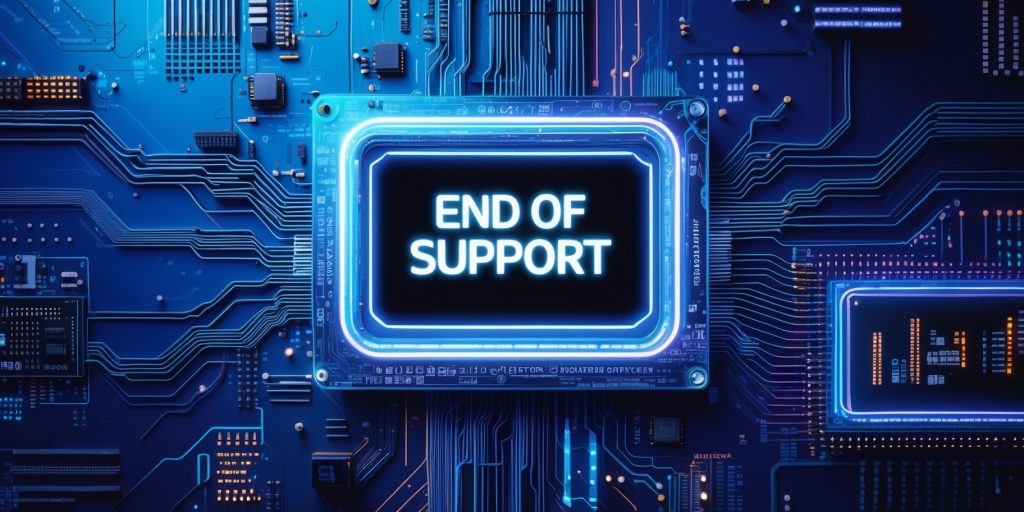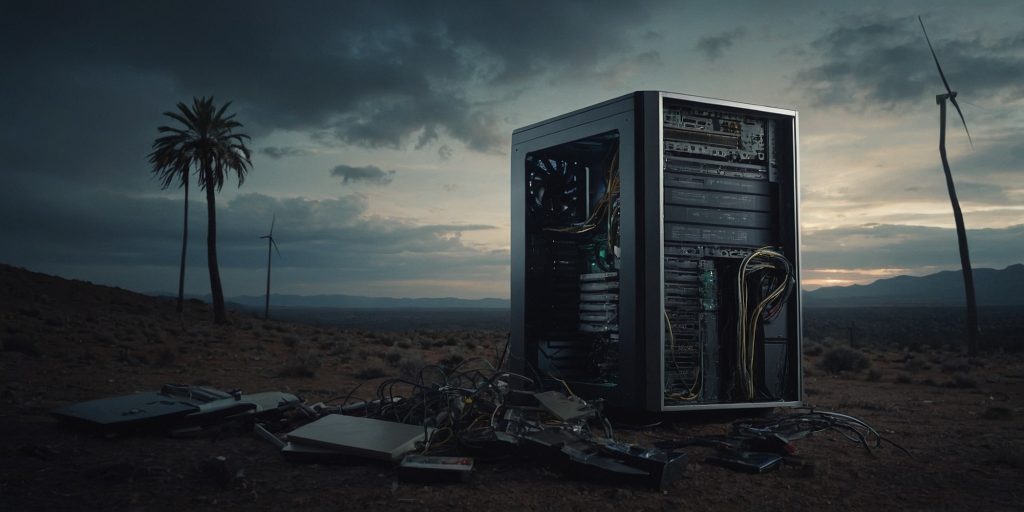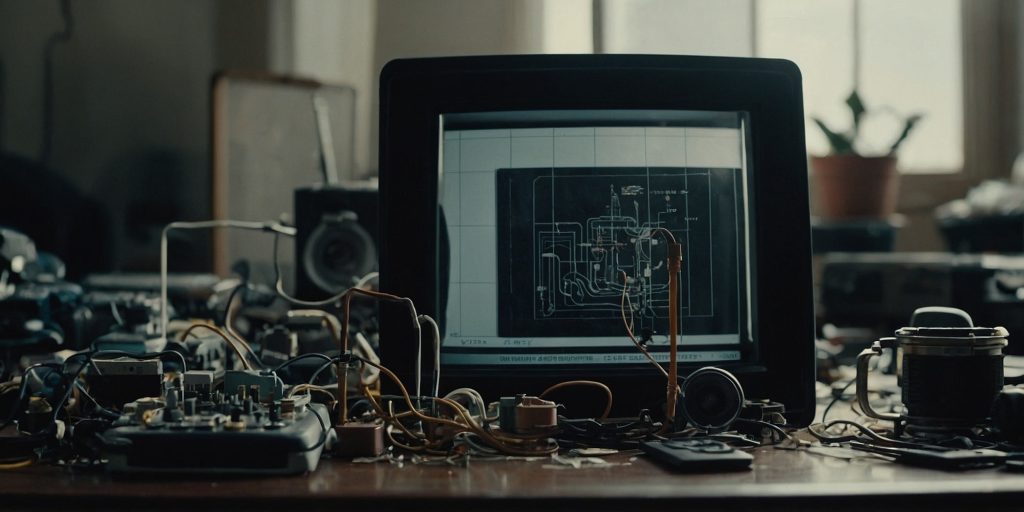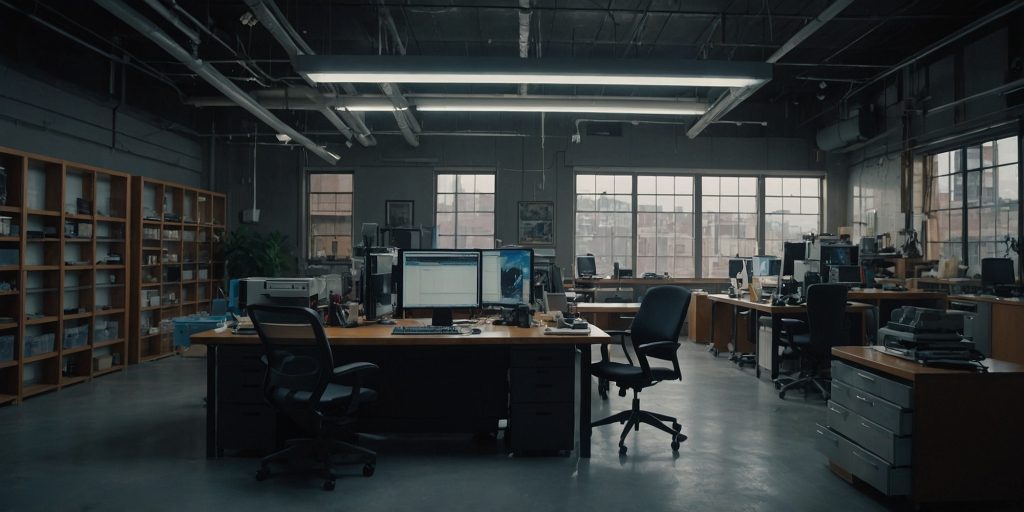For years, Windows 10 has been the dependable workhorse of business computing.
But now, the end is officially in sight: Microsoft will end support for Windows 10 on 14 October 2025.
This isn’t just another software update to snooze. It’s a major shift in how your systems are protected and supported.
After this date, Microsoft will no longer offer security updates, bug fixes, or technical assistance for any version of Windows 10, free or otherwise.
That’s a serious turning point for businesses that rely on their IT systems to run smoothly and stay secure.
Because while your computers won’t suddenly power down on 15 October, they will instantly become more vulnerable to threats, and more expensive to maintain.
Whether you’ve got dozens of desktops or a sprawling hybrid workforce, the message is clear: waiting is the risky option.
If your business hasn’t already started preparing for life after Windows 10, now’s the time to make a plan.
But before you assume everything will keep running just fine, it’s worth understanding what “end of support” actually means behind the scenes.
What End of Support for Windows 10 Actually Means?
When Microsoft ends support for Windows 10 on 14 October 2025, your devices won’t suddenly shut down.
You’ll still be able to log in, open applications, and get on with your day, at least for a while.
But make no mistake: this is not business as usual. It’s the digital equivalent of losing your safety harness while walking a tightrope.
Behind the scenes, your systems will be running without a vital layer of protection, and the longer you continue using Windows 10 after support ends, the more those hidden risks compound.
Let’s break down exactly what this means for your business.
- No more security updates, even when new threats emerge
Microsoft routinely releases patches to defend against evolving cyber threats. When support ends, those updates stop, leaving every system still running Windows 10 exposed to vulnerabilities the moment they’re discovered. - No bug fixes for crashes or performance issues
Software isn’t static; bugs happen. But once Windows 10 is off the support list, any problems that crop up are yours to deal with. There’s no guarantee your apps will continue running smoothly or efficiently over time. - No technical help from Microsoft
Have an issue that requires support? Once Windows 10 is out of service, Microsoft won’t be there to assist. You’ll be on your own or relying on third-party IT providers to troubleshoot problems that used to be covered by Microsoft itself. - Rising risk of cyberattacks and data breaches
Outdated operating systems are a goldmine for hackers. They actively scan for older software they know won’t be patched, making unsupported systems prime targets for ransomware, spyware, and phishing exploits. - Increased IT maintenance costs
Supporting legacy systems usually means more manual fixes, more workarounds, and more downtime. Businesses often find themselves paying more just to keep ageing systems afloat, and still fall behind on performance and protection.
In short: running Windows 10 past its end-of-support date isn’t just risky, it’s a ticking time bomb for your business.
So Why Not Just Stick With What’s Working?
Eventually, things will break, and without support, even minor issues can spiral into major risks. As third-party vendors move on from Windows 10, your systems will slow down, become less secure, and harder to maintain.
It’s like running your business on a cracked ladder; it might hold today, but one misstep could be costly. Support isn’t just about updates, it’s about keeping your business resilient.
That ticking time bomb? It’s not just theoretical, it’s already drawing attention from cybercriminals.
The real danger of staying on Windows 10 isn’t what you see, it’s what you don’t.
Let’s talk about why sticking with it puts your business directly in the crosshairs of today’s most aggressive cyber threats.
Why Staying on Windows 10 Is a Security Risk
Every day you stay on Windows 10 after 14 October 2025, the risk grows.
Without security updates, your systems become easier to breach, and attackers know it. Cybercriminals actively target outdated systems, and mid-sized businesses are a prime focus.
They’re betting you won’t upgrade in time, don’t prove them right.
- 43% of cyberattacks target small and medium-sized businesses
That’s nearly half. Why? Because attackers know many SMBs lack the resources of large enterprises, but still handle valuable data like payment info, customer records, and intellectual property. - No more patches means permanent vulnerabilities
Once support ends, any new weakness discovered in Windows 10 will go unpatched. That gives attackers a forever-open door to exploit, and they will, because they trade in exactly these kinds of flaws. - Ransomware thrives on outdated systems
Out-of-date software is a dream for ransomware gangs. Once inside, they can encrypt your entire system, demand a payment to unlock it, and hold your business hostage. The average cost of a ransomware attack, including downtime and recovery, is in the millions globally. - Data breaches damage more than your systems
If customer data is leaked, trust is shattered. And depending on your industry, you could also be staring down regulatory fines, lawsuits, or lost contracts for failing to maintain compliant systems. - Insurance doesn’t always cover outdated software
Many cyber insurance policies include clauses that require up-to-date security practices. Running unsupported software could void your coverage, leaving you fully exposed in a crisis.
For cybercriminals, outdated systems like Windows 10 are easy targets, and for businesses, the risks are mounting from every direction.
If you’re thinking of buying time with paid updates, make sure you understand exactly what you’re getting… and what you’re not.
Why Paying for Extra Security Updates Doesn’t Add Up
Microsoft knows some businesses won’t be ready to upgrade by October 2025, which is why they’re offering Extended Security Updates (ESUs): paid patches to extend protection on Windows 10.
It sounds like a simple short-term fix. But look closer, and it’s clear, you’ll be paying more for less.
- You’ll be paying more than you think.
ESU pricing increases each year:- Year 1: USD $61 (approx. AU$94) per device
- Year 2: USD $122 (approx. AU$188) per device
- Year 3: USD $244 (approx. AU$376) per device
That’s over USD $427 (AU$650+) per device across three years, just to keep receiving security updates you previously got for free.
- No new features, no support, just patches
ESUs don’t include performance upgrades, new tools, or bug fixes. You’ll still be running outdated software, just with a few extra security plugs. - Miss a year? You’ll pay for it anyway
ESUs are cumulative. Skip Year 1 and want to jump in later? You’ll still need to pay for all missed years to qualify again. - Still stuck with compatibility issues
Many third-party apps and tools will stop supporting Windows 10 regardless of your ESU status. You’ll miss out on newer features, integrations, and performance gains that come standard with Windows 11.
Why keep pouring money into a system that’s reached its limit?
ESUs are a short-term patch, not a solution. That spend is better used to modernise your setup and move confidently to Windows 11.
If ESUs are just delaying the inevitable, then the smart next step is figuring out whether your current hardware is ready for the future.
Before you assume you’ll need to replace everything, take a moment to assess what you already have; you might be closer to Windows 11 readiness than you think.
How to Check If Your Devices Can Run Windows 11
If ESUs only buy time, the next step is clear: check if your current devices can make the move to Windows 11.
You might be more ready than you think.
1. Use Microsoft’s PC Health Check Tool
The easiest and fastest way to assess compatibility is with Microsoft’s PC Health Check tool, a free download that scans your system and tells you whether it meets the Windows 11 requirements.
Here’s how to use it:
- Search “Windows PC Health Check” in your browser and download it from Microsoft’s official site
- Install and run the tool on each of your business devices
- Click the “Check now” button, and within seconds, you’ll get a clear answer
You’ll see one of two messages:
- “This PC meets Windows 11 requirements”, great! You’re good to go.
- “This PC doesn’t currently meet Windows 11 requirements”, don’t panic. In many cases, the issue is fixable.
2. What Could Be Holding Your Devices Back?
If your PC doesn’t pass the test, it doesn’t always mean you need a replacement. Many compatibility issues are relatively simple to address, especially with the help of your IT team or support provider.
Common blockers include:
- TPM 2.0 is disabled
This is a small security chip built into most business-grade computers. In some devices, it’s simply turned off in the BIOS and needs to be enabled, a quick fix for most IT pros. - Secure Boot isn’t switched on
Like TPM, Secure Boot is a feature that protects your system from malware during startup. It may just need to be activated in your settings. - Not enough RAM or storage
Windows 11 requires at least 4GB of RAM and 64GB of storage, but for business use, 8GB+ RAM is strongly recommended. A small upgrade may be all that’s needed to get your system up to speed. - The processor is too old
This is one of the harder issues to fix. Windows 11 requires a newer-generation 64-bit CPU. If your device is more than four or five years old, it may not be eligible, and replacement might be the best path forward.
3. Windows 11 System Requirements at a Glance
Here’s what a Windows 11-ready machine needs:
- Processor: 1GHz or faster, dual-core, 64-bit compatible
- RAM: Minimum 4GB (8GB+ ideal for business use)
- Storage: 64GB or more
- TPM: Trusted Platform Module (TPM) version 2.0
- Secure Boot: Must be enabled
- Graphics Card: DirectX 12 compatible
- Display: Minimum 720p resolution, 9” or larger screen
Once you’ve run the checks and identified which devices are good to go, the next step is figuring out what to do with the ones that aren’t.
Because if an upgrade isn’t possible, you’ll need to decide whether to patch, replace, or risk falling behind.
What to Do If Your Devices Can’t Run Windows 11
If some of your devices aren’t compatible with Windows 11, don’t panic; you’re not the only one.
But this is a key decision point, and what you do next will directly impact your business’s security, performance, and costs moving forward.
Let’s break down your options.
Option 1: Pay for Extended Security Updates (ESUs)
If you want to keep your existing devices and buy some time, Microsoft offers Extended Security Updates (ESUs) for Windows 10. This allows you to continue receiving critical security patches, but at a cost, and only for a limited time.
- Year 1: USD $61 (approx. AU$94) per device
- Year 2: USD $122 (approx. AU$188) per device
- Year 3: USD $244 (approx. AU$376) per device
- Total: Over USD $427 (AU$650+) per device, just to stay where you are
While this might seem like the easier choice, it’s a temporary patch.
After Year 3, the updates stop completely, no matter what. And you still don’t get any bug fixes, feature improvements, or Microsoft support.
Use this option only if:
- You absolutely can’t upgrade hardware immediately
- You need time to budget or phase out equipment
- You understand this is a stopgap, not a solution
Option 2: Replace Incompatible Devices
If your devices are more than 4–5 years old or fail the compatibility test with no upgrade path, replacing them is your best long-term move.
It might feel like a bigger upfront cost, but in most cases, it’s the most cost-effective and secure decision over time. Here’s why:
- New devices come with full Windows 11 compatibility
- You get improved speed, efficiency, and longer hardware lifespan
- Reduced maintenance and support costs
- Access to modern tools and integrations (like AI Copilot and Microsoft Teams integration)
- Stronger hardware-level security to protect your business data
When to replace instead of patching:
- Devices are aging or out of warranty
- No feasible way to upgrade hardware (e.g. unsupported CPUs)
- You want to take advantage of modern features and performance gains
Why Timing Matters: Don’t Wait for a Rush
Here’s something many businesses overlook: the closer we get to October 2025, the more likely we are to see:
- Hardware shortages and supply chain delays
- Longer wait times for IT setup, onboarding, and support
- Increased competition for equipment, especially in bulk orders
Upgrading early means you can spread out the cost, plan a phased rollout, and avoid business disruption. Waiting until the last minute could result in downtime, rushed decisions, or overspending just to get things over the line.
Think of it like tax season, everyone who waits until the deadline creates a bottleneck. Early action = smoother process.
The Smart Play? Start Planning Now
Whether you’re replacing 5 machines or 50, lead time matters. Auditing your fleet now gives you control over your budget, rollout, and staff training.
If you’re not sure which machines to upgrade, which to retire, or how to prioritise your rollout, that’s where a trusted IT partner can step in and help guide your decision with real data.
Upgrading isn’t just about staying compliant; it’s about keeping your business competitive, protected, and productive.
Getting ahead of the deadline isn’t just about avoiding problems; it’s about unlocking real advantages.
Because once your business is ready, Windows 11 doesn’t just keep things running, it takes everything up a level.
Why Upgrading to Windows 11 Is a Smart Move
Windows 11 isn’t just an upgrade, it’s a leap forward. It offers powerful tools to help your business stay secure, productive, and connected with ease.
- Stronger security, built-in
With protections like TPM 2.0, Secure Boot, and built-in encryption, Windows 11 is ready for today’s evolving cyber threats. - Faster performance, less frustration
Improved memory and system efficiency mean quicker boot times, smoother multitasking, and fewer slowdowns. Snap Layouts make juggling tasks simpler than ever. - Collaboration without friction
Microsoft Teams is built right into the taskbar, enabling one-click access to calls, messages, and shared files, perfect for hybrid teams. - Smarter productivity with AI Copilot
Copilot helps you draft emails, summarise content, automate tasks, and find answers, like having a built-in assistant at your fingertips.
In short? Windows 11 helps your business run faster, work smarter, and stay protected, all in one upgrade.
Clearly, the benefits of upgrading go far beyond security patches. Windows 11 sets your business up for smarter, faster, and more flexible work.
Now that you know the why, let’s look at how to make the transition smooth, strategic, and disruption-free.
How to Upgrade Without the Chaos
Upgrading to Windows 11 doesn’t have to mean downtime, frustration, or endless IT headaches. With the right approach, you can make the switch smoothly, without disrupting your team or operations.
Here’s how to plan a clean, stress-free transition:
- Audit your devices
Run the PC Health Check tool across your entire fleet to see which devices are ready, which need upgrades, and which should be replaced. - Test compatibility with your software and hardware
Make sure your business-critical applications and peripherals (like printers and scanners) work well with Windows 11. Most modern software is supported, but it’s worth double-checking with vendors. - Back up everything
Before any system changes, confirm that all your files, settings, and user data are safely backed up, ideally to a cloud solution that’s easily recoverable. - Plan your rollout strategically
Avoid peak business periods. If possible, upgrade in phases, starting with a small group to test and fine-tune the process before scaling up. - Train your team
A new interface means new habits. A short onboarding session or cheat sheet can help staff adjust quickly to Windows 11’s layout and features. - Have IT support on standby
Even a smooth rollout can hit bumps. Whether it’s your internal IT team or a managed service provider, make sure someone’s available to troubleshoot during and after the transition.
With a little planning, upgrading doesn’t have to feel like pulling teeth.
It’s your chance to improve performance, boost security, and modernise how your business works, without chaos.
Even with a solid plan, executing a full upgrade across your business can be complex and time-consuming.
If you want to make the move without the stress, the right IT partner can turn that plan into a smooth, hands-off reality.
Don’t Go It Alone: Get Expert Support
Upgrading your business to Windows 11 isn’t just about switching operating systems; it’s about making the move with confidence, clarity, and zero surprises.
But let’s be honest: managing device audits, checking compatibility, securing backups, testing software, training staff, and rolling out upgrades (all while running a business) is a lot to take on.
That’s where the right IT partner makes all the difference.
We help businesses like yours take the stress out of major transitions, handling the heavy lifting so you can focus on what matters most: keeping your team productive and your operations running smoothly.
Here’s how we support you every step of the way:
- Device audits to assess compatibility and identify upgrade paths
- Upgrade planning tailored to your timeline, workload, and budget
- Ongoing support for troubleshooting, security, and system performance
- Staff training to help your team get comfortable with new features, fast
Whether you’re rolling out upgrades across dozens of devices or navigating legacy systems, we’ll help you get to Windows 11 without downtime, data loss, or disruption.
Let us handle the transition, you stay focused on your business.











